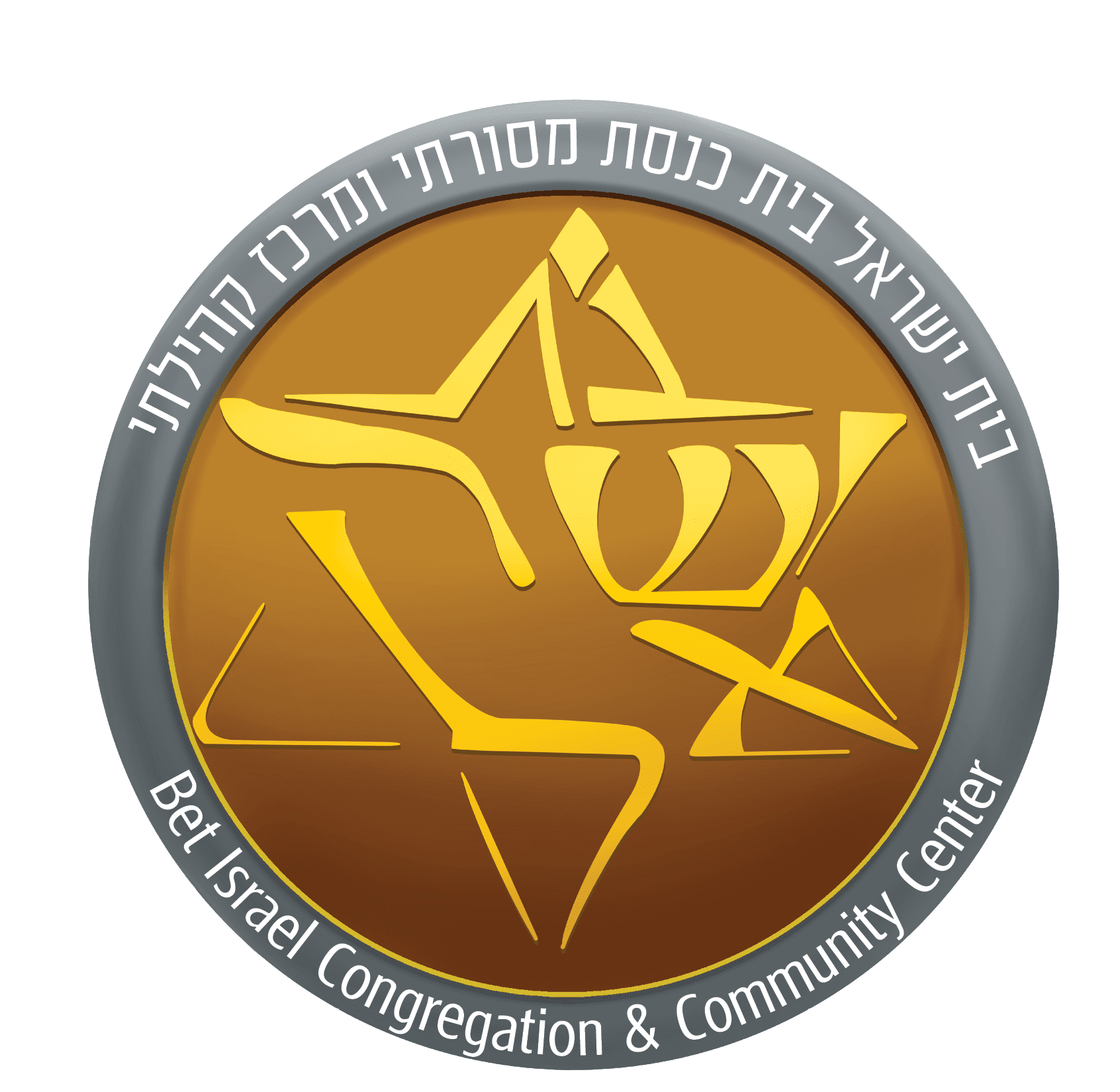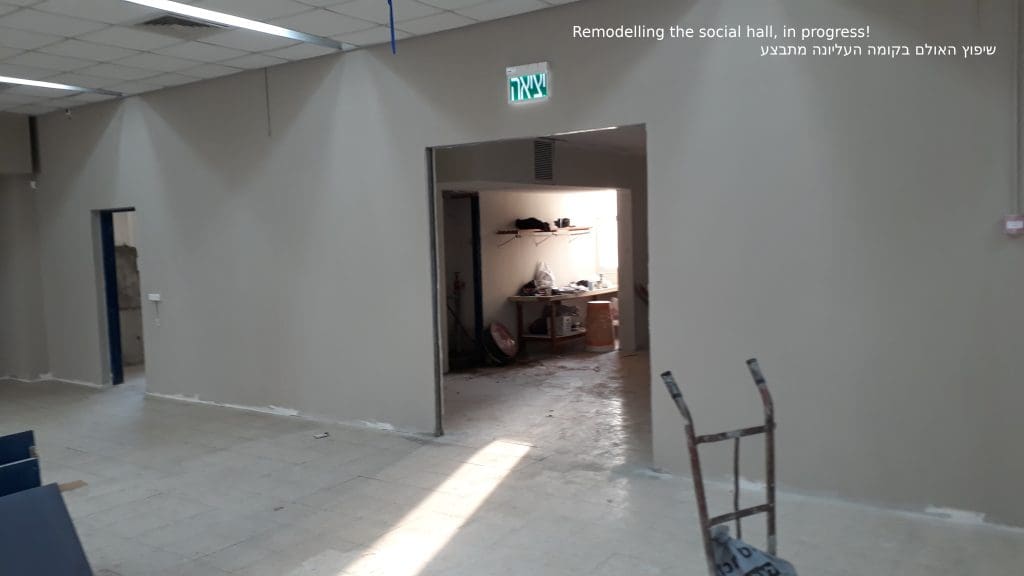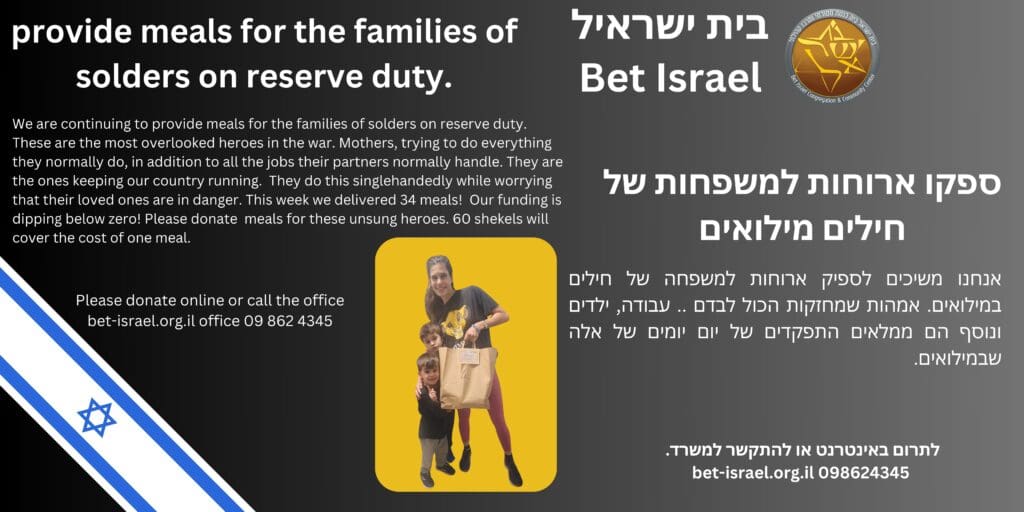Events
Bulletin
A Message from the Rabbi |
Dear members of Bet Israel Community, In Tractate Ta’anit, it is stated: “Just as during the month of Av we decrease in joy, so too, during the month of Adar we increase in joy.” Indeed, the sages instruct us to encourage and amplify joy not only on the days of Purim itself but throughout the entire month of Adar. Just recently, we “sat and wept” shedding tears together with Yarden Bibas, who laid to rest his wife Shiri and his young sons, Ariel and Kfir, who were brutally murdered by Hamas. Sorrow hangs in the air like a dark cloud. Yet, the month of Adar, the month of joy, is upon us, and the dissonance is striking. How can we embrace the joy of Adar as we face a tsunami of grief that had started over five hundred days ago? How do we celebrate when national circumstances trigger a sadness that cannot be ignored? Having true joy on Adar under the shadow of mourning leaves us discombobulated, at best. The Hatam Sofer explains that the increase in joyfulness during Adar stems from the story of Megillat Esther, which recounts the transformation of the Jewish people’s destiny from annihilation to salvation, from the curse of Haman to the blessing of Mordechai. Therefore, the entire month of Adar symbolizes the triumph of good over evil. According to Rabbi Sofer’s teaching, we should rather draw encouragement from the spirit of the month of Adar. The Baal HaTanya delves into human nature, asserting that true joy does not contradict sorrow but rather grows from it. He explains that genuine joy comes from the internal work of facing pain and overcoming it. Thus, both the grieving individual and a distressed nation have the opportunity during Adar to connect with joy not as an external state of mind, but as an internal journey of resilience, purification, and growth. Knowing Rabbi Nachman of Breslov’s personal struggles with melancholy and depression, we can better understand his famous statement: “It is a great mitzvah to be always joyful,” a message that reinforces the teachings of the Baal HaTanya above. Rabbi Nachman explains that Adar grants a person special strength to overcome sadness and to embrace true joy. He emphasizes the importance of joy precisely during times of hardship, as joy has the power to overcome despair and sorrow. Even though a mourner as well as a person at war naturally feels sadness, they can perceive joy as divine. By strengthening their trust in God, they can find room for joy even within sorrow. We learn about the theological essence of Adar from Midrash Tanchuma, which states: “The Holy One, Blessed Be, desired to have a dwelling place in the world.” From this, our sages concluded that humanity’s purpose is to reveal the divine light within physical reality through their actions in this world. Indeed this worldview is a cornerstone of Jewish faith. The Hebrew word “Adar” (אדר) is composed of “Aleph” (א) and “Dar”, dwells (דר). When the letter “Aleph” symbolizes God (אלוהים), then the word “Adar” mean “God dwells.” Therefore, this Adar, during which we are licking our wounds from the war, and burying our dead hostages, our joy is not exuberant but rather of a different quality. It is the deep joy of an archaeologist uncovering the beautiful mosaic floor after painstaking excavation through filth and dirt. It is a joy tinged with sorrow, the kind that stems from, as well as touches, the eternal spirit that dwells within. Now is the time, despite our mourning, to recognize and celebrate our strengths as a people who possess abundant resilience and excel at revival. During this Adar, we must recognize the astonishing proliferation of simple acts of kindness that emerged from the crisis. We must acknowledge how our covenant and shared destiny has strengthened, and remember the palpable sense of unity that has emerged. Surely, we will continue to shed tears as long as it is necessary, but we will mingle our tears of sorrow with our tears of joy, each one of us in his/her own way. Our beloved Shiri, Ariel, and Kfir Bibas would have wanted nothing less. They have bequeathed us with the mandate to go on living, along with the imperative to embrace the joy of Adar no matter what. |
A word from the President |
When Hellenizers saved the nation The term Hellenizers (Mityavnim – מתייוונים ) was first coined during the Hellenistic period, when Judea was a province of the Hellenistic (at first the Ptolemaic, and then subsequently the Seleucid) empires, to describe Jews who radical Pharisees regarded as not sufficiently committed to Judaism. They were the Hellenistic period’s equivalent of secular Jews, Jews who wanted to be part of the Hellenistic world in which they lived, without abandoning their culture and tradition. Over the centuries the word has become a pejorative the ultra-Orthodox aim at Jews they consider treasonous. Their וunforgivable sin is that they are comfortable being part of both the Jewish and Western cultures they live in. This makes them assimilated Jews, those who Netanyahu himself put it “have forgotten they are Jews”. Other right wing Kahanist politicians, such as Simha Rotman, Dudi Amsalem, and Shlomo Karhi, have been even blunter, saying that there is no room in Israel for secular Jews. Their rationale is that their very presence in Israel is what is preventing the arrival of the Messiah, and thus are responsible for delaying the implementation of the final chapter of our national redemption, making them traitors. Purim is a good opportunity for us, who as non-Orthodox Jews are ipso facto Mityavnim, to remind ourselves and those who spare no efforts in delegitimizing us, that it was not them, but us, the Hellenizers (even though the term had not yet been coined), who saved the nation from annihilation. Mordechai and Esther, the two heroes of Purim, were both what would be called today Hellenizers. Both had adopted non -Jewish Persian names. Mordechai is derived from Morduch, the chief deity of the pre-Islamic Zoroastrianism that was the main Persian religion. Esther is derived from Ashtar, the Persian incarnation of Ashtoret, who was the goddess of fertility throughout Mesopotamia and the Levant. Both were clearly culturally (though not religiously) assimilated into mainstream Persian life. It was these two culturally assimilated Jews, who were able to, and did, step up when needed to prevent a catastrophe. The key hero of the Passover story was definitely not an observant Hebrew/Israelite (the terms Jew and Judaism would only evolve at least 1,500 years after he lived). I am of course referring to Moses. Most historians today believe Moses was most likely not even a Hebrew, but an Egyptian. Moses is an Egyptian name, or more precisely half a name. Mases, aka Moses or Mose or Mesas, was a royal patronymic (son of). It was a suffix reserved solely for royalty, who often named their princes son of whichever God they wanted to. Rameses is Son of Ra, Thutmose is son of Tut, another Egyptian God. During the rule of the 18th Dynasty (1550 – 1292 BCE), Egypt underwent a religious revolution instituted by Pharaoh Akhenaton (Amenhotep IV) who ruled between 1353-1334 BCE. He replaced Egypt’s traditional polytheistic religion with a henotheistic/monotheistic one, in which the sun god Ra became the only God, and his name was changed from Ra to Aton (Aten). Whether this occurred independently, or as a result of Egyptian exposure to the Hebrew YHWH based henotheistic religion is unclear. What is clear from linguistic evidence is that the tribe of Levi (from which Moses was supposedly) clearly intermixed with Egyptian society during this period; many of its leaders’; names are Hamitic, not Semitic (Pinhas, Aaron, Moses, Miriam, to name but a few). This religious revolution was not popular among the old religious establishment. Approximately 50 years after Akhenaton’s death his dynasty was overthrown by Ramesses I, who founded the 19th Dynasty. He reinstated traditional the traditional pre-Aton polytheism. The Sun God, once again merely one of several major gods, was once again known as Ra. One of the first things the new dynasty did was to eliminate every prince of the 18thdynasty, to prevent any challenges to the new regime, which knew its claim to the throne was tenuous. He was the Pharaoh described as the Pharaoh “who knew not Joseph”, and ordered the Hebrews to be used as forced labour to build a new city, which he named after himself. Far from being a Hebrew brought up by Egyptian royalty, Aton-Moses, the last surviving prince of the 18th dynasty, was smuggled out of the capital and hidden among the Levites, who clearly had a close relationship with the 18th dynasty. To hide his identity, he became just Moses. At some point, when it was considered safe, he was returned to the royal court, where he grew up, gaining valuable military leadership skills and experience. At some point his identity was discovered, and he was forced to flee. At this point he decides to put the military and leadership skills and know-how he had acquired when living as a royal, at the service of the enslaved Hebrews. The rest is history, or at least the narrative that would define history, as we have no way of knowing exactly which parts of Exodus are fact, and which are fiction. Approximately 2,500 years after Purim, it was again the Hellenizers, Herzl, Ben Gurion, and Jabotinsky, and the other leaders of the Zionist movement, a secular national movement, who would bring about the establishment of Israel, ushering in a period of renewed Jewish sovereignty. Far from being the obstacle to national redemption, throughout most of our history it has been us who have been the saviours of the Jewish nation in its hours of need. It is the radical, fundamentalist messianic leaders like Bar Giora, Bar Kokhba, Rabbi Akiva and Shabtai Zvi, who have brought ruin and disaster on us. |
ACES | ||||||||||||||||||||||||||||||||||||||||||||||||||||||||||
Dear Friends and Members As if the turmoil Am Yisrael is presently going through is not enough, at Bet Israel we are going through our own synagogue-related turmoil. In stark contrast to the general hardships we are all facing due to the war, ours is on a much more positive note: the renovations at Bet Israel have started! Anyone who has visited recently can feel the change in the air. Things are moving (literally) and a lot of hard work has gone into the logistics and preparations for it. In another few months, we look forward to celebrating a brand-new social hall and kitchen. As we step into the month of Adar and spring, we approach Purim knowing that we will soon have a beautiful newly refurbished top floor to attract new members and help our community grow. On reading the Megillah on Purim we go over the story of Esther and Mordechai and are reminded that in every generation we have been the target of attempts to annihilate us and we pray that the fate of our enemies today will be the same as that of Haman in the distant past. May we see the return of our hostages very soon and all our enemies truly smitten once and for all. May the wounded heal completely and may our amazing resilience continue so that we can move forward and rebuild all our communities that make up this special people in this special land. Purim Sameach. Am Yisrael Chai! Debbie Efron President, Bet Israel ACES Upcoming events: Passover We will be celebrating Passover in just a few weeks: Shacharit for Pesach will be led by Rabbi Modak April 13th at 8:30. 1st day of Pesach April 12th at 8:30 with Yizkor Naomi Levin will be running an artistic workshop on Thursday April 17 at 11:00. Each participant will have the opportunity to create a piece of art which, while inspired by classical artists’ renditions of the Jews crossing the Red Sea, will also reflect the people of Israel bringing the Bibas family out of Gaza and escorting them to their final resting place in Israel.
| ||||||||||||||||||||||||||||||||||||||||||||||||||||||||||




